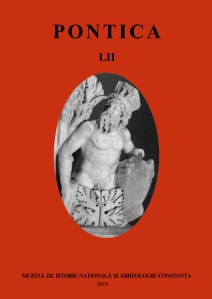Roman Glassware from Korean Peninsula: Silla, Gaya, Baekje from 4 th to 6 th century AD. Myth or Reality. II.
Roman Glassware from Korean Peninsula: Silla, Gaya, Baekje from 4 th to 6 th century AD. Myth or Reality. II.
Author(s): Bartlomiej Sz. SzmoniewskiSubject(s): History, Anthropology, Social Sciences, Archaeology, Local History / Microhistory, Ancient World
Published by: Muzeul de Istorie Națională și Arheologie Constanța
Keywords: glass; Roman glassware; Silk Road; Korea; Three Kingdoms; Far East;
Summary/Abstract: In part two of the article, I discuss finds of western origin glass vessels from the Three Kingdoms on the Korean Peninsula in the social context.Three chronological horizons with glass vessels can be distinguished within the Period of the Three Kingdoms of Korea: 1 - the period starting from the second quarter of the 4th century AD; 2 - the horizon covering the 5th and the first half of the 6th century;3 - the horizon representing the period after the half of the 6th century. Most numerously,glassware was represented in the second of the horizons, prevailingly in the rich burialsattributed to the rulers of Silla in Gyeongju.Imports of glass vessels to the territories of the Three Kingdoms, Silla and Gaya above all, should be connected with the nomadic ruling dynasties of Northern China, i.e.with the Xianbei tribes, whose burials also contain glassware.In the Korean Peninsula, glassware from the period discussed, namely from thefourth to the 6th century, had the character of prestige objects and this is the reason whythey were being added to grave goods. After the population had converted to Buddhism,glassware continued to be the sign of a high social status but their function changed -they became gifts offered at Buddhist temples.
Journal: Pontica
- Issue Year: 2019
- Issue No: 52
- Page Range: 213-236
- Page Count: 24
- Language: English

